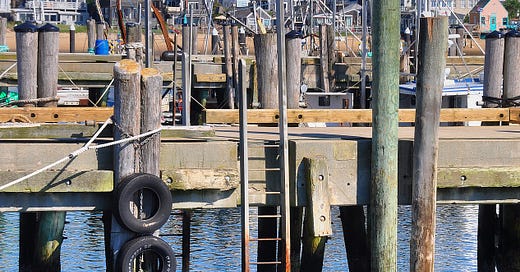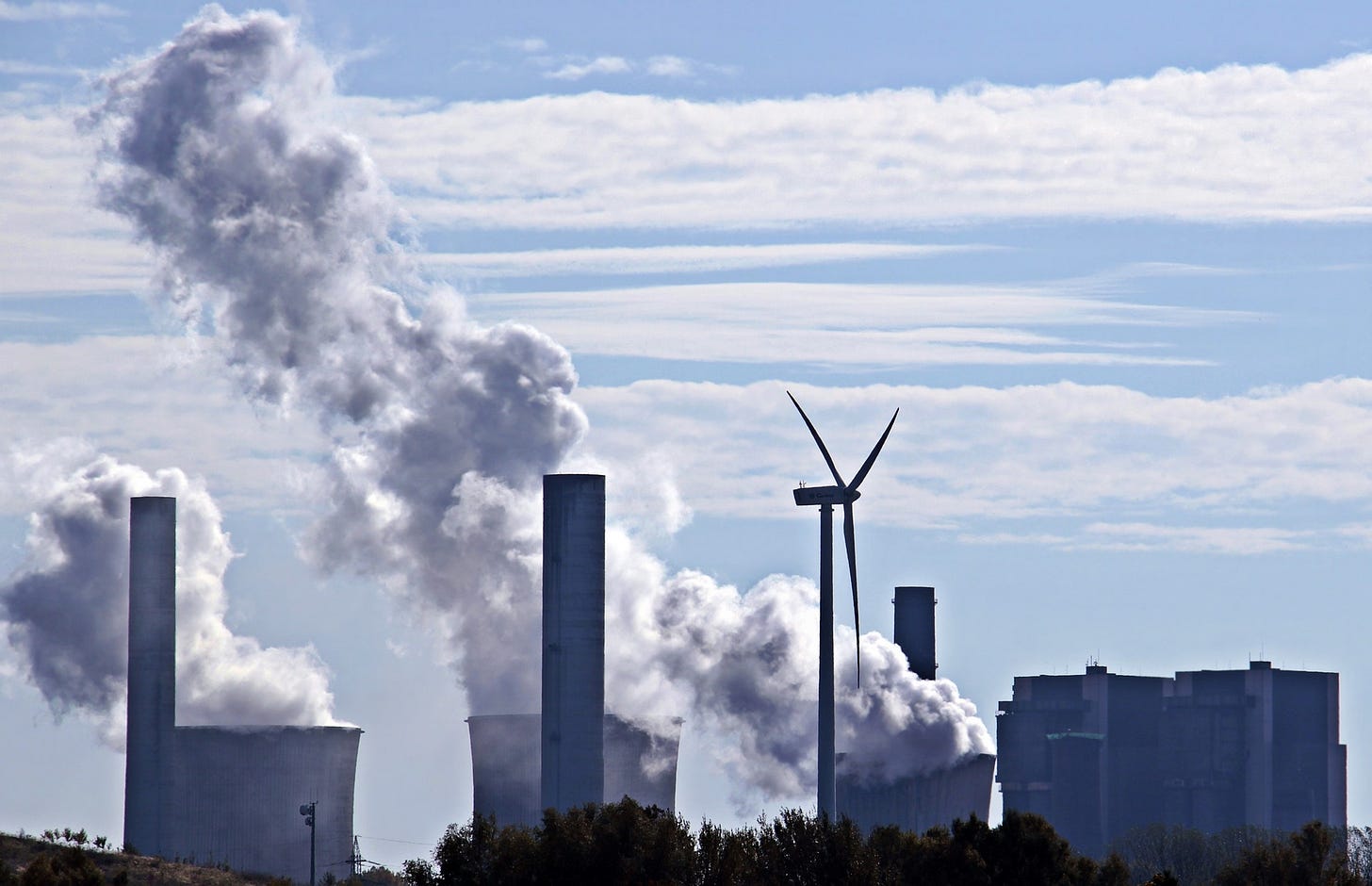A better target for climate action
Pensions – yes, immortal pensions – can pay for climate security right now
I live in a 400-year-old, picturesque beach resort town. It’s a retirement mecca.
The average age in Provincetown, at the tip of Cape Cod in Massachusetts, is 20 years older than the US national average. People have worked their whole lives for the privilege to reside here in their old age, unencumbered by the day-to-day obligations of a job. This lifestyle may have been the goal that kept them in long, unhappy careers. It may be why they sacrificed a dream in their youth to put away more money to enjoy in the future.
These retirees didn’t devalue their future.
Retirement is their reward.
To get it, they gambled living a life.
Yet, in stark contrast, their pension plans – those financial lifelines that make retirement viable – have devalued, and do devalue, the future.
These pensions are complicit in extending the current climate crisis. By that action and through their enormous, aggregated financial heft, they are undermining the future dignified retirement they promise.
So, if you’re worn out by yelling at the closed doors of government and industry to address global threats like climate change, pension funds – yes, boring old pension funds… stay with it – comprise a very vulnerable and right-sized new target for your planet-scale anger.
Get cozy with terms like “stewardship” and intergenerational “fiduciary duty” because these are the pain points to push — hard — to force this reckoning:
Pension funds can pay for climate security. Right now.
This change in target matters
These vast, big-money pension funds are designed to live Forever, with a capital F. As immortals, they will exist in whatever 22nd Century, climate-changed future they help create because of what they do today. Combined, these fiduciary trusts are worth at least $35 trillion globally, which is comparable in value to the price tag of decarbonizing the planet.
From an October 2021 poll by Reuters:
The International Monetary Fund this month cited estimates that net zero by 2050 would mean extra investments of 0.6%-1% of annual global GDP over the next two decades amounting to a cumulative $12 trillion-$20 trillion.
In the poll, there was substantial divergence in the scale of dollar estimates for the cumulative investment needed, reflecting the differing methodologies used by economists. The median view provided was $44 trillion.
Yet, these pensions are absent or silent and have, thus far, forsaken their roles as stewards protecting their present beneficiaries’ trust. Importantly, that group of beneficiaries is a very real proxy for all of us living in this time and in future generations, regardless of our pension status.
Imagine the might of the combined activist armies of Bill McKibben and Greta Thunberg turning their attention:
From corrupted and craven government and industries that are steadfastly immune to shame and moralistic demands for change
Toward pension funds, and other fiduciary trusts, that are far more vulnerable to challenges that the future is not relevant in today’s decision making.
(Potential) climate heroes
Quick mid-way summary: Pensions are rich enough to pay for climate security, but make it worse instead, despite the promise of a comfortable retirement for their beneficiaries.
You might call that disingenuous, fraud or even malpractice. It’s definitely an opportunity to make change at scale, when effective, global leadership of pandemics like climate is presently lacking. Let’s be generous and say that pensions today just haven’t figure out yet that they can be the heroes of climate security.
It comes down to how they make their money now and how they might otherwise generate a return.
How do they make the financial minimums required to keep the pensions financially vital, in perpetuity
In which markets do they make that money
To whom do they delegate the job of making the required return on investment, and
How do they define, or don’t define, their missions of “stewardship” and intergenerational “fiduciary duty”.
At Bank of Nature, we argue that fiduciary money, as a category of finance, is trapped in (Answer to 2) dangerous, short-term, extractive and speculative markets like Wall Street in order to make its financial minimums, when the recipe for another much longer-term stewardship option is written into its DNA.
That mission-based foundation comprises (Answer to 4) stewardship and fiduciary duty, both terms that have generally murky meanings in today’s pension sector, when we see them as clear imperatives for this and future generations.
Stewardship, for us, means prudent leadership for the long-term health of not just the fund but also the beneficiaries.
Fiduciary duty, for us, is intergenerational and requires financial minimums generated directly through negotiated deals that enhance the opportunity for sustainable cash flow over the long-term.
We call that new option fiduciary finance, a finance sector innovation that is a dedicated stewardship-driven channel designed specifically for big institutional/fiduciary money. It is separate and distinct from risky corporate finance markets (like Wall Street) that were designed for individual investors and where institutional investors, like pensions, presently play an out-sized role in market making. Fiduciary finance shifts the impacts of fiduciary investments from abstracted market-clearing price picking to direct investments in nature-building enterprises, as one benefit for future beneficiaries. Fiduciary finance retakes the jobbed-out role of asset manager from (Answer to 3) the commission-driven pension-consultant middle persons made rich by (Answer to 1) gambling in the corporate finance markets with trillion-dollar bankrolls from their pension clients. It gives agency back to the pensions, guided by their obligations to their beneficiaries, to negotiate social and environmental values into deals that also produce the value they need to live on, in perpetuity.
A fiduciary finance channel through something like Bank of Nature, that is designed to repair the environment and diminish the existential threat of pandemics like climate change, is a way to sidestep the traditional obstacles of government and industry that are designed to conquer nature. We call Bank of Nature a “proxy for nature”, a structural addition in the economy paid for by fiduciary money like pension funds.
Fully embracing expansive “stewardship” and “fiduciary duty” roles is a climate crisis game changer. Our Fiduciaries for the Future group launches with a free Zoom call February 10 to engage on exactly that. Join us.
The forever factor
This is our offering at Bank of Nature: To engage stewardship funding from fiduciary money to meet both financial minimums and the promise of a better future for retirees and future generations, in perpetuity.
American Express started one of the first pension plans, the original Civil Service Retirement System for US federal employees began in 1920 (until it was replaced by Federal Employees Retirement System in 1987) and labor unions catalyzed a movement that saw pension plans flourish in the 1940s and ‘50s. US pension reform was enshrined in the Employee Retirement Income Security Act of 1974 that built in protections through the Pension Benefit Guaranty Corporation.
If pensions are not designed to live forever, they are designed to live on for many lifetimes. The oldest have already operated for 100+ years. Either way, they are designed to thrive long after this generation of pensioners and this group of pension fund managers are dead.
This puts fiduciary money squarely in the climate crisis even if it is presently silent.
Every day, someone with a defined benefits pension turns 65 and can start to collect the promised annuity benefits to pay for a dignified retirement until they die. According to the US Census, 10,000 people turn 65 every 24 hours in just the US.
Average life expectancy in the US is almost 79 years today, nine years longer than in 1960 and the trend is up. In 2050, there will be 386,000 centenarians in the US, compared to just 92,000 today.
That means a pension fund will pay benefits for, on average, 14 years for 65-year-old pensioners, but maybe up to 35 years for increasing numbers of robust 100-year-old retirees.
The pension funds play actuarial math to make it all work by maintaining financial minimums in investment returns to keep the fund healthy enough to make good on those promises decades into the future. At the most basic level, that means the fund meets its fiduciary duty — in the order of 7% per year returns. Actuarial science quantifies future risk using probability and mathematical models to essentially price the future, allowing them to make investment choices today.
It’s not lost on us that we already know how to manage future risk in terms of strategic choices today, but that wisdom does not yet extend to climate threat mitigations.
Carrying on… Every day, a 20-something gets a job for which they are promised a pension in, say, 40 years, depending on when they decide to start their third act. US public service workers employed by federal, state and local governments boast some of the most robust defined pension plans. In this decade, the total number of US government employees will grow from 22 million to 23 million.
So, every day, a defined benefits pension plan (which, granted, are in general decline in favor of defined contribution plans) is reminded that its horizon is 54 to 75 years into the future. That means that pensions taking new enrollees today have a plan to function well enough to pay benefits starting about 2076 through to the end of the century.
Already, the youngest new hires with pensions are set to retire after 2050, which is that arbitrary date when world governments and industries are supposed to have climate wrangled or not. The National Oceanic and Atmospheric Administration (NOAA) paints a vivid picture of 2050 – for example, the $106 billion worth of coastal property in the US sunk by rising seas.
If those pensions are still enrolling beneficiaries in one or two decades, that promise extends into the 22nd Century. That also means the actuarial wizards forecasting benefits paid out in the 22nd Century are factoring in risks of value-killers like climate change that eats $106 billion worth of US real estate by 2050.
If there is a pain point to poke, it’s this betrayal of pension funds to secure a comfortable retirement for their future beneficiaries.
Why aren’t pension funds actively working on climate solutions rather than exacerbating a climate crisis?
By enrolling new hires in a pension to be redeemed in the future, are they not in a vivid breach of trust, a fiduciary's one job?
Pensions today are actively working against a safe climate future by delegating their vast financial influence to market makers, asset managers and other consultants who invest those funds in speculative, extractive, polluting and climate-dimming investments (like fossil fuels).
In a recent report, for example, the total investment by Canada’s top pension funds in U.S.-listed shares of Canada's top oil sands producers jumped to $2.4 billion in the first quarter of 2021, up 147% from a year ago.
It feeds the larger view that pensions all around the world talk about greening funds and then do the opposite.
An expensive future
Inflation, the federal reserve and national bank percentage that makes everything today more expensive tomorrow, is an artificial devaluing of future purchasing power. It’s the steam valve that regulates the economy, another artificial system that ebbs and flows, booms and busts. It’s tied to cash inflows and outflows and does not yet account for the externalities of transacting that cash flow. Externalities are the accumulated, unpaid damages to the environment which are the byproduct of an extractive economy that does not account for its debt to nature – a core Bank of Nature tenet. Unpaid externalities manifest in extreme climate, migrating disease, biodiversity loss, climate refugees and conflicts, rising seas and other environmental and social costs of extracting value from nature. Climate inaction punts those costs forward to be paid in the future at a cost to the economy and, vividly, in devalued retirements.
The currency of repayment to nature may be more costly than cash dollars.
Onboarding new hires whose compensation includes a pension on retirement should outline how the pension plan is investing in ways that ensure retirement is worth all the work to get there – 54-75 years, give or take, in the future.
We know what makes that future dimmer. What makes it brighter? What leads toward an idealized retirement not compromised by a climate dystopia paid for by those idealistic retirees?
“Where will you be in 20 years?” asks the recruiter. It’s a question designed to probe your long-term ambitions and, presumably, your life plan. “Impossible to know” is the correct answer.
However, the answer that gets you hired is a fantasy of the future in which your most current hopes and dreams are fulfilled regardless of forces beyond your control.
So you say: “I will be looking forward to living in Provincetown, enjoying the retirement I’ve earned working hard for you.”
“You know... if it's not already gobbled in the $106 billion in lost coastal real estate.”









